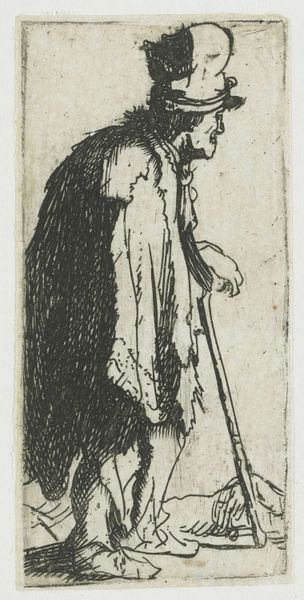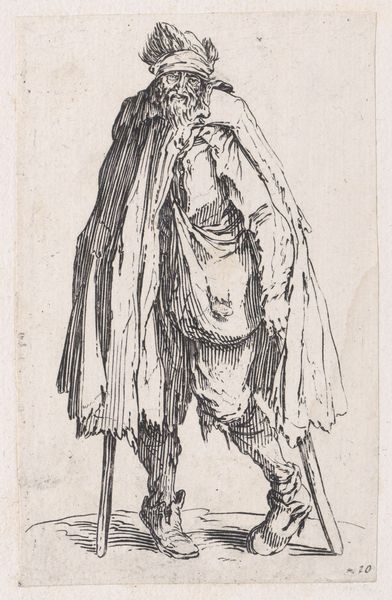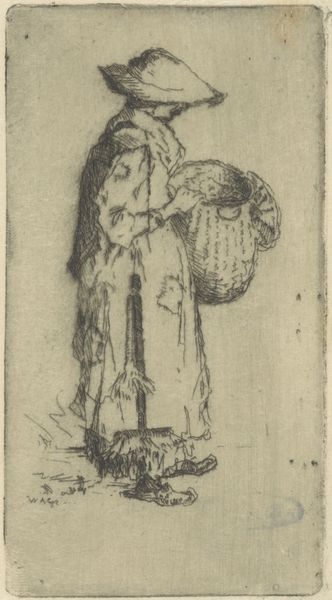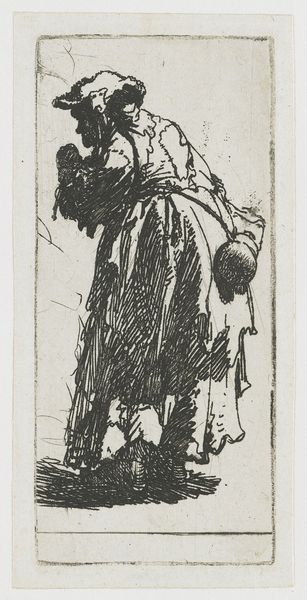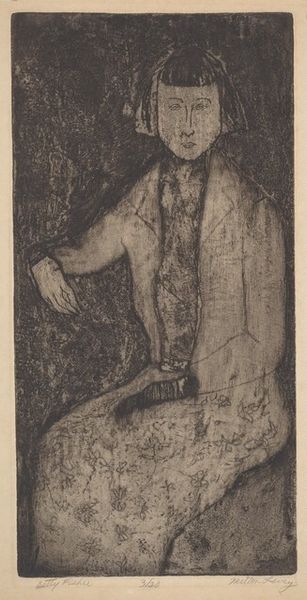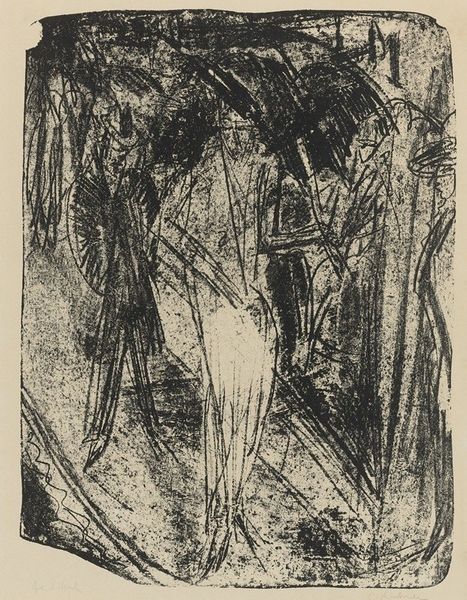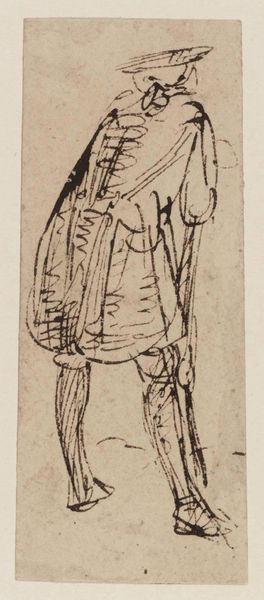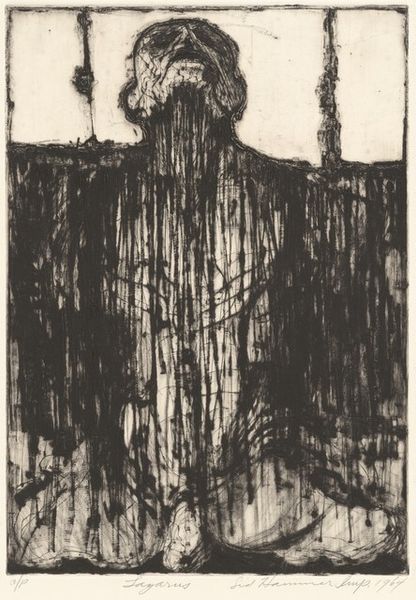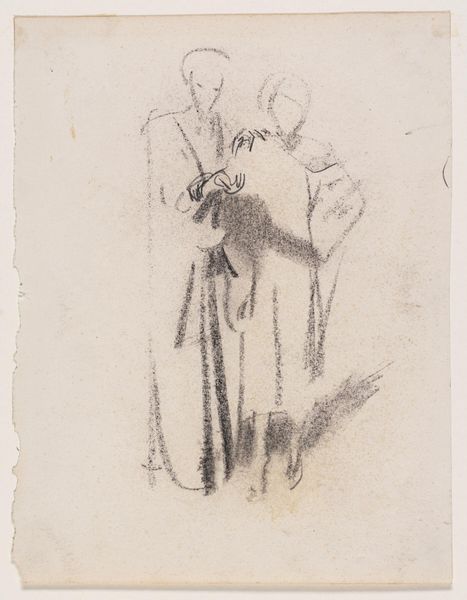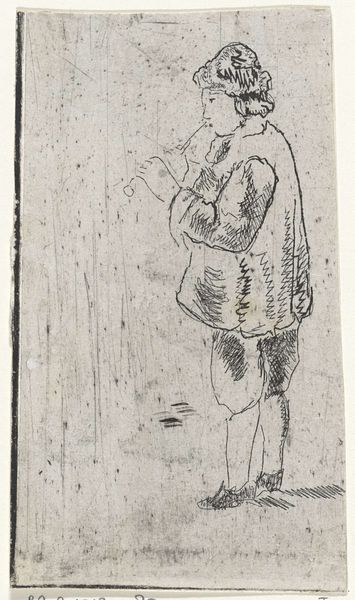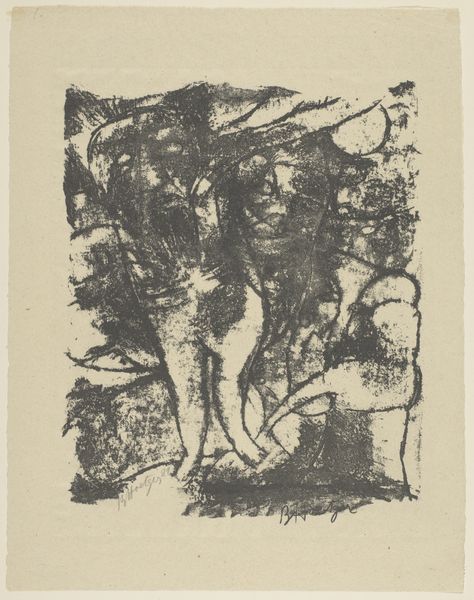
drawing, etching, ink
#
portrait
#
drawing
#
ink drawing
#
baroque
#
pen sketch
#
etching
#
figuration
#
ink
#
genre-painting
Dimensions: height 99 mm, width 43 mm
Copyright: Rijks Museum: Open Domain
Curator: Look at this evocative etching by Rembrandt van Rijn, circa 1629, housed here at the Rijksmuseum. It's called "Beggar with a Crippled Hand, Leaning on a Stick." Editor: It strikes me immediately – there’s a powerful sense of vulnerability here. The stooped figure and dark lines convey a feeling of hardship. Curator: Absolutely. Considering the economic conditions of the 17th century Netherlands, it's fascinating to think about Rembrandt’s approach to depicting laborers and those marginalized. The printmaking process itself – the labor involved in etching the plate, inking it, and pressing it – creates a direct connection to manual work. Editor: Right, we should think about how this fits within the Golden Age narrative. There’s this boom happening, and this simultaneous explosion of images, of wealth – but where did the raw materials for that wealth come from, and who suffered in its wake? This print forces us to confront those uncomfortable truths, the inequities embedded within that prosperity. Curator: And he did a number of these etchings portraying ordinary people, sometimes even selling them on the street himself. The market for prints democratized artmaking to a certain degree. Editor: Precisely! And by choosing a beggar as a subject, Rembrandt disrupts traditional hierarchies in art. He gives dignity, perhaps even monumentality, to someone often ignored. This piece makes us reflect upon the construction of the social order during that time. How class, disability, and gender intersected. Curator: And it is ink, paper and skill - these simple materials become powerful socio-economic markers. Editor: I agree; these etched lines speak volumes about social conditions and material processes. A really fascinating example of art prompting vital dialogue. Curator: It is. And on a purely technical level, Rembrandt's skill is undeniable, particularly in conveying such nuance through etching. Editor: Indeed, by taking a deeper look we are able to appreciate this artwork's reflection on both art practices and Dutch history.
Comments
rijksmuseum about 2 years ago
⋮
Rembrandt’s rapid progress as a printmaker is easy to see in this group of poor wretches. The seated woman is still somewhat crudely executed, but the beggar woman with a gourd and her male companion already testify to greater mastery of the technique. The little prints of a man and a woman are etched in the finer style that Rembrandt was to develop later.
Join the conversation
Join millions of artists and users on Artera today and experience the ultimate creative platform.
